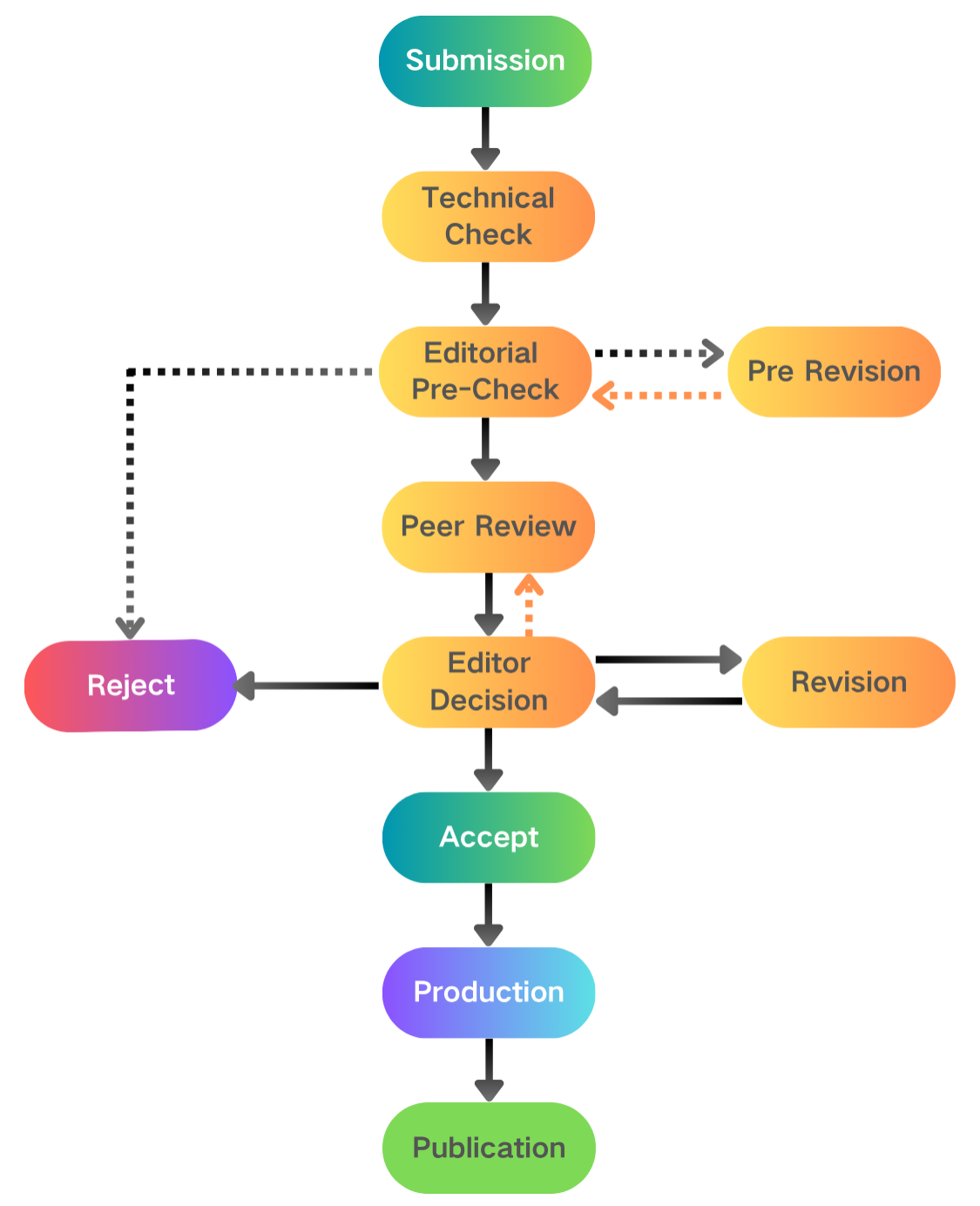The journal Annals of Agri-bio Research implements a rigorous and transparent peer review process to ensure the highest quality of publications, managed by the Academic Editor (usually the Editor-in-Chief or a member of the Editorial Board authorized by the Editor-in-Chief). We uphold that peer review should be efficient, thorough, and equitable for all participants. In Annals of Agri-bio Research , the process involves a single-blind assessment by at least two independent reviewers, culminating in a initial and final decisions by the Academic Editors. The Academic Editor is accountable for the academic integrity of the publication process, and should ensure that any potential conflicts of interests are avoided.
The editorial process is summarized in the flowchart below.

Annals of Agri-bio Research Editorial Process.
A Step-by-Step Guide to Article Publishing
1. Initial Submission
When you are ready to submit your manuscript, please use the journal’s online submission system. You will receive a notification together with a manuscript ID after successful submission.
2. Technical Pre-Check
We will ensure that your manuscript adheres to the journal’s guidelines for ethics, plagiarism, authorship, and copyright permissions, etc. We oversee this process to ensure that your manuscript contains everything our editors and peer reviewers need to perform a fair and thorough assessment of your work.
3. Editorial Pre-Check
The Academic Editor (usually the Editor-in-Chief or a member of the Editorial Board authorized by the Editor-in-Chief) will be notified of the submission and invited to conduct an editorial pre-check. During this phase, the Academic Editor will evaluate the manuscript’s alignment with the journal’s scope and its overall scientific rigor, including the relevance of references and the accuracy of the applied methodology. Based on this assessment, the editor may reject the manuscript, request revisions before peer review, or assign it to an Academic Editor to handle the peer review process.
4. Peer Review
The peer review process for Annals of Agri-bio Research is single-blind, where the author remains unaware of the reviewer’s identity, but the reviewer knows the authors. At least two review reports are collected for each manuscript, with the Academic Editor suggesting potential reviewers during the editorial pre-check. The peer review process not only acts as a filter to ensure only high-quality research is published but also provides feedback for authors to improve their work.
The Academic Editor selects reviewers based on their independence, expertise, recent related assessments, and ability to review within the required timeframe. Authors may suggest reviewers, although these suggestions may not always be followed. The editor will honor requests to exclude certain scientists from reviewing. Independent reviewers are typically selected from the global research community with great care.
These reviewers provide critical evaluations of the manuscript’s validity and significance, offering their perspectives on its novelty, impact, and relevance to readers. Reviewers are encouraged to categorize their feedback into the following recommendations:
- Accept in Present Form
- Accept after Minor Revisions
- Reconsider after Major Revisions
- Reject
Please note that reviewers’ recommendations are only visible to the journal editor and not the authors. Decisions regarding revision, acceptance, or rejection must always be well-substantiated.
Review reports are intended to guide the Academic Editor. The Academic Editor consolidates all review reports received to reach a initial or final decision. Generally, all review reports intended for the authors are transmitted. Occasionally, review reports may be edited to maintain anonymity and collegiality in the review process.
5. Revision
Authors are encouraged to thoroughly consider and address all reviewers’ and Academic Editor’s comments. This process allows authors to improve their manuscripts accordingly. Authors can respond to reviewers’ comments, indicating changes made or justifying disagreements. A new cover letter with a point-by-point response to reviewers’ and editor’s comments should accompany the revised manuscript.
The Academic Editor will review this revised version and decide as to acceptance/rejection, or a second round of peer review.
6. Editor Decision
Editor decision is made by the Academic Editor (usually the Editor-in-Chief or a member of the Editorial Board authorized by the Editor-in-Chief) when initial or final peer review process is closed. The Academic Editor evaluates the suitability of reviewers, the adequacy of reviewers’ comments and authors’ responses, and the overall scientific quality of the paper. One of the following editorial options will be made by the academic editor, based on the reviewers’ recommendations and authors’ feedback:
- Accept in Present Form
- Minor Revision
- Major Revision
- Reject
Manuscripts are accepted only by the Academic Editor. The Academic Editor must disclose any potential conflicts of interest, and alert the Editorial Office to any potential conflicts of interest.
7. Accept
Once the Academic Editor (usually the Editor-in-Chief or a member of the Editorial Board authorized by the Editor-in-Chief) recommends “Accept in Present Form,” the manuscript will be accepted immediately, and all authors will receive a notification by email.
8. Production
The production team handles the production of all manuscripts. Authors will receive proofreading requests after the final editing of the manuscript. It is a necessary step to proofread the final version of the manuscript before publication online.
9. Publication Online
All articles are published online after proofreading approval by authors.
The corresponding author’s contact details will be featured online, for possible consulting of the article contents.
Update in May 2025
